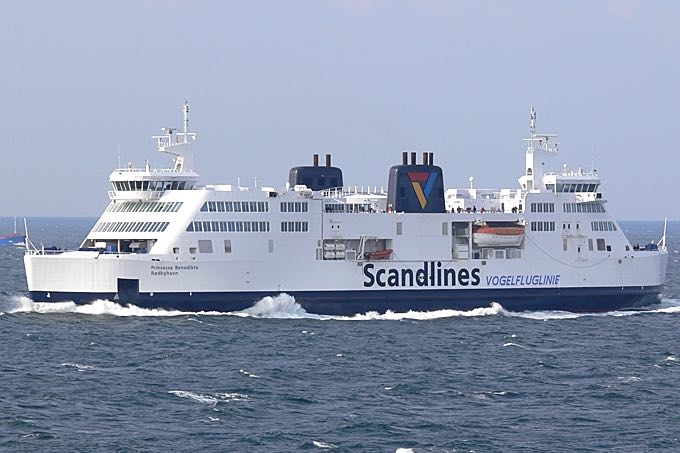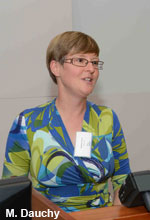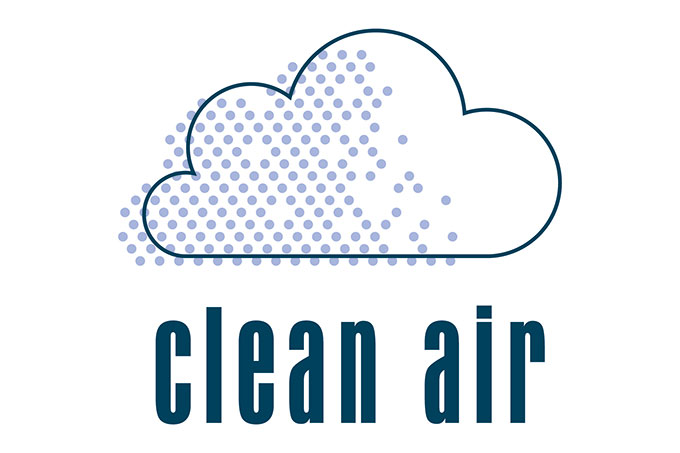Container vessel of Hapag Lloyd is being loaded or unloaded at Noordzee terminal.
Clean Air in Ports: Antwerp
Second workshop in Antwerp on October 8th
On October 8th 2013, the second workshop of the LIFE+ "Clean Air in Ports" project took place in Antwerp, Belgium. More than 50 participants from various European countries, representing port economy, port authorities, science and NGOs and relevant administrative bodies from the Flemish region, attended the event. The workshop was co-hosted by the Antwerp Port Authority and supported by NABUs Flemish BirdLife-partner "Natuurpunt".
-
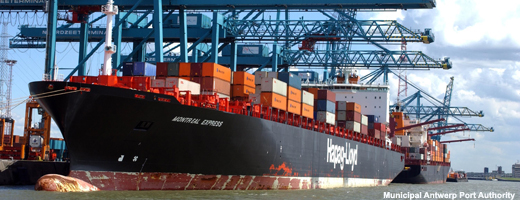
-
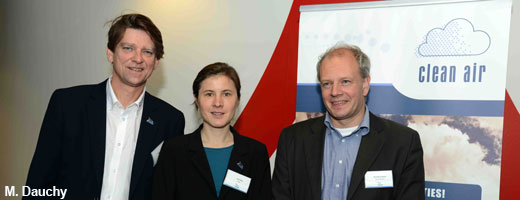
Malte Siegert (l., NABU), Julia Balz (NABU) and Kris de Craene (Antwerp Port Authority).
-
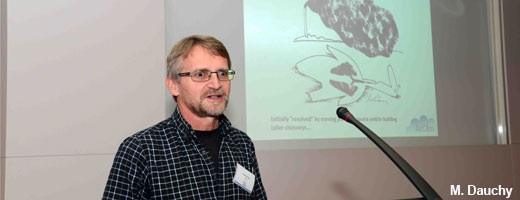
Christer Ågren (AirClim)
-
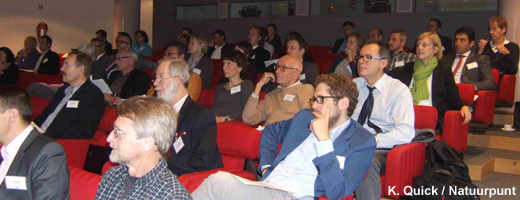
Auditorium at the workshop “Clean Air in Ports: Antwerp”.
-
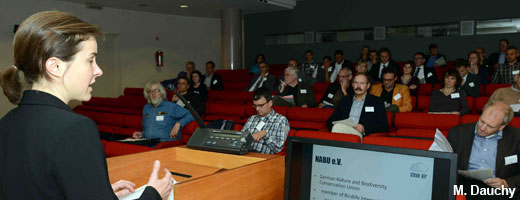
Workshop “Clean Air in Ports: Antwerp”
-
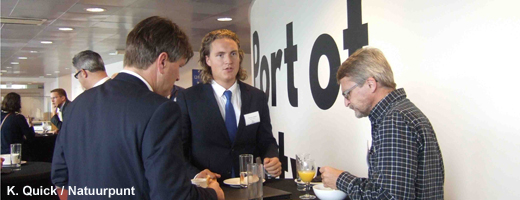
Ole-Johan Svendsen (Wärtsila) and Christer Ågren (AirClim)
-
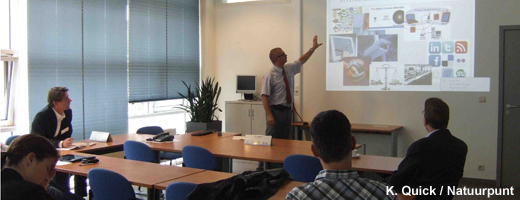
Working Group II: Terminal operators
-
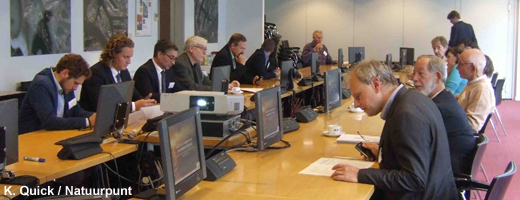
Working Group I: Scrubber
-
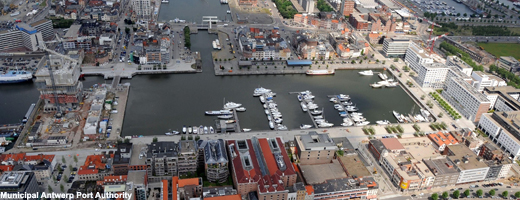
Aerial photograph of Willem dock and Kattendijk dock. Willem dock is now used as a yacht basin. To the right of the dock a.o. the Entrepot building and the present Port house. At the top to the right, Kempisch dock also used as yacht basin by Sodipa.
The morning session introduced into the project, the topic of air pollution from ships and ports and into the legal framework. After an overview of the EU LIFE+ project, that is funded by the European Commission Christer Agren from the Swedish Air Pollution and Climate Secretariat (AirClim) in Gothenburg explained the nedd to act by presenting the impacts of NOx, SO2 Particulate Matter (PM) and Black Carbon for environment and climate. He was followed by the toxicologist Prof. Jeroen Buters of the Virtual Helmholtz institute, who presented the scientific project HICE, where for the first time human lung cells are exposed to exhaust gases from a ship. Conclusion of the current state of research is that the negative hazardous health effects are far more threatening than originally assumed. After the coffee break measures to reduce emissions of NOx and PM10 were presented by representatives from regional and local authorities.
Jasper Wouters from the Flemish Department for Environment, Nature and Energy illustrated the regional approach to handle the impairments of NOx and PM10 while Filip Lenders, Head of Energy and Environment at the city of Antwerp, explained challenges and actions from the perspective of the local administration. Due to additional impacts of emissions from the port the Antwerp Port Authority had developed a specific plan for the harbor area.
This plan was presented by Luc van Espen, technical manager environment at Antwerp Port Authority. The morning session was completed by Guido de Wilt from the European Commission, DG Environment. Among other things Mr. de Wilt gave an overview about international and European air quality standards as well as EU policies on sustainable shipping, the ongoing revision of the directive 2012/33/EC for marine fuels and future actions to improve urban air quality in European cities. The afternoon session was split into three working groups, each focusing on one specific aspect of emissions. The first working group dealt with the pro and cons of scrubbers and different solutions and systems within this technology. Two short inputs were made by Ole-Johan Svendsen from the Finnish company Wärtsila Moss AS, expert for marine technical solutions, and Antoine Kedzierski from Transport and Environment (T&E), an NGO specialized on transport issues located in Brussels. This working group was moderated by Guido de Wilt from the EU commission.
Two best practice examples from terminal operators were shown in working group two. Hinrich Kötter from the German specialist company Terex Port Solutions presented the Automatic Guided Vehicles (AGV) which are already in use at HHLA terminal in Hamburg/Germany and will be installed as well at Maasvlakte II in Rotterdam/Netherlands and the port of Los Angeles/USA. Jan Cuppens, manager technology and projects WO?, presented the concept of hydrogen generators on straddle carriers, which already play a major role to reduce emissions at the terminal of MSC in Antwerp. Due to major fuel savings both techniques contribute to cleaner air in ports and are economically reasonable because of its comparatively fast return of investment. This working group was moderated by Malte Siegert, environmental policy officer at NABU Hamburg (Germany).
How to get an air quality plan- was the issue dealt with in working group three. Moderated by Christer Ågren from AirClim, Luc van Espen from Antwerp Port Authority and Erik De Bruyn from the Belgium Watch Department in the City of Antwerp explained the efforts in Antwerp to develop a framework for the local dealing with air pollution in an industrial marine cluster.
The vivid discussions within all working groups and after the presentations of the speakers from the morning session showed the high interest of the participants in the issue of air pollution and its various sources especially within the port areas of European cities.
The results of the workshop will be integrated into the working paper, which is updated constantly throughout the duration of NABU EU LIFE+ project “Clean Air in Ports” until midst 2015 and then be published as a manual.
More Information
In ports the air is often more contaminated than elsewhere. Ships, shunting locomotives, or heavy truck traffic pollute the air with emissions from fuels that are a thousand times dirtier than road fuels. more →

